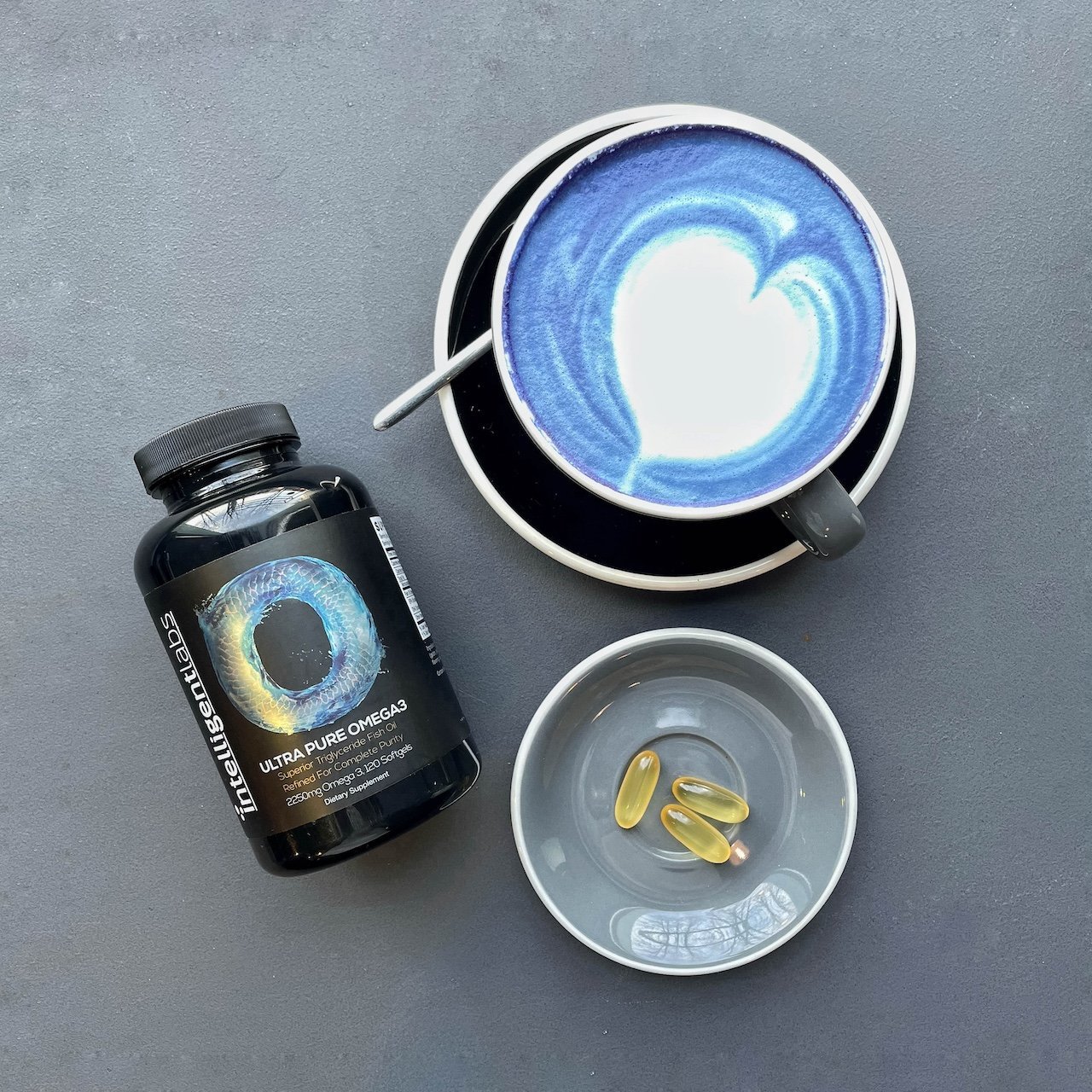Do your joints ache whenever it rains or gets cold? You’re not imagining it — weather changes can trigger stiffness and discomfort. But the good news is, you can fight back! From staying warm and active to eating joint-friendly foods and taking supplements like Omega-3 and Glucosamine, small changes can make a big difference. Keep reading to learn why it happens and how to stop the pain.
Table of Contents
How can I manage joint, knee, and back pain in cold or rainy weather?
Cold, rainy days don’t have to keep you stuck in discomfort. There are plenty of ways to take control and feel better.
Tip #1: Stay warm!
Whether it’s bundling up in cozy layers, using a heating pad, or treating yourself to a warm bath, keeping your joints toasty helps improve blood flow and ease stiffness.1 Moisture-wicking clothing is especially useful if you’re venturing outdoors. Likewise, a dehumidifier can make your home more comfortable during rainy seasons.
Tip #2: Keep your body moving
Gentle activities like yoga, walking, or stretching can work wonders for keeping your joints flexible and reducing stiffness. If knee pain is a problem, simple strengthening exercises like leg lifts or mini squats can make a noticeable difference.
For back pain, focusing on good posture and trying stretches like cat-cow or child’s pose can relieve tension and improve flexibility. Small, consistent movements throughout the day can keep your joints feeling their best.
Tip #3: Nourish your joints with the right foods (and supplements!)

Diet and supplements are another piece of the puzzle. Omega-3-rich foods like salmon, walnuts, and flaxseeds are natural inflammation fighters.2 If you want something more convenient, our Ultra Pure Omega-3 Fish Oil can be a game-changer!
Collagen Peptide supplements are also great for supporting cartilage and joint flexibility,3 while Glucosamine is well-known for its ability to maintain cartilage health and reduce stiffness.4
Curcumin, the active ingredient in turmeric, is a powerful anti-inflammatory compound that can help ease joint pain caused by inflammation.5
Tip #4: Stay hydrated
Proper hydration is important for joint health. Water helps keep the cartilage in your joints lubricated and reduces stiffness.6 Aim to drink plenty of fluids throughout the day, especially in colder weather when thirst cues might be less noticeable.
Tip #5: Maintain a healthy weight
Carrying extra weight puts additional strain on your joints, especially in the knees, hips, and lower back. Maintaining a healthy weight can significantly reduce joint stress and improve overall mobility.7 If weight management is a challenge, focus on small, sustainable lifestyle changes like balanced meals and regular exercise.
Why do my joints hurt when it’s cold or raining?
The connection between weather and joint pain comes down to how your body reacts to atmospheric changes. When barometric pressure drops, the tissues around your joints can expand slightly, leading to discomfort. Cold weather also reduces blood flow to your extremities, which can make your joints feel stiffer and more prone to aches.8 9
For those with conditions like arthritis, these factors can make symptoms even more pronounced.10 Additionally, muscle stiffness caused by cold weather may exacerbate joint pain, particularly in the knees and back. This explains why so many people report that their bones hurt when it’s cold or that rainy days leave them feeling achy and stiff.
So, to sum up, if you’ve been asking yourself, “Why do my joints hurt when it rains?” or “Why does cold weather make me feel so stiff?” — the answer lies in these physiological responses to temperature and pressure changes.
What conditions make joint pain worse in cold, rainy weather?
Cold, damp weather doesn’t affect everyone the same way, but certain conditions make people more vulnerable to weather-related joint pain.
Osteoarthritis is a common culprit, as the already-worn cartilage in the joints becomes less cushioned in cold weather, making movements more painful.11
Rheumatoid arthritis is another condition that tends to flare up in the winter, as colder temperatures and dampness may trigger increased inflammation and swelling.12
Chronic back pain is also more noticeable during colder months, as tight muscles and reduced flexibility contribute to discomfort.13 Poor posture, which often develops during periods of inactivity in winter, can make back pain worse.
If you’ve experienced these conditions, it’s no wonder knee pain in cold weather or joint pain in cold weather feels worse as temperatures plummet. But the good news is, there are ways to manage these symptoms effectively.
When should I see a doctor about joint pain?
Most weather-related joint pain can be managed with self-care, but certain signs mean it’s time to see a doctor.
If your pain is severe, persistent, or comes with symptoms like swelling, redness, or fever, it could indicate an underlying condition that needs professional attention. Difficulty moving or pain that disrupts your daily life are also good reasons to consult a healthcare provider.
Conclusion
Cold weather doesn’t have to leave you sidelined. By making these small, thoughtful changes, you can stay ahead of joint pain and enjoy life—rain or shine. With a little care and the right strategies, you’ll be ready to take on the day, no matter the forecast.
💬 Have you tried any of these tips or have your own strategies for managing joint pain? Share your thoughts and experiences in the comments below. We’d love to hear from you!
📩 Want more quick, science-backed health tips? Join our mailing list to receive expert insights straight to your inbox, plus exclusive offers just for subscribers!
References:
- Sayre, Carolyn. “Heat Therapy Helps Relax Stiff Joints | Arthritis Foundation.” Www.arthritis.org, 2024, www.arthritis.org/health-wellness/healthy-living/managing-pain/pain-relief-solutions/heat-therapy-helps-relax-stiff-joints. ↩︎
- Krupa KN, Fritz K, Parmar M. Omega-3 Fatty Acids. [Updated 2024 Feb 28]. In: StatPearls [Internet]. Treasure Island (FL): StatPearls Publishing; 2025 Jan-. Available from: https://www.ncbi.nlm.nih.gov/books/NBK564314/ ↩︎
- Martínez-Puig, Daniel et al. “Collagen Supplementation for Joint Health: The Link between Composition and Scientific Knowledge.” Nutrients vol. 15,6 1332. 8 Mar. 2023, doi:10.3390/nu15061332 ↩︎
- Williams C, Ampat G. Glucosamine Sulfate. [Updated 2023 Jul 22]. In: StatPearls [Internet]. Treasure Island (FL): StatPearls Publishing; 2025 Jan-. Available from: https://www.ncbi.nlm.nih.gov/books/NBK558930/ ↩︎
- Paultre, Kristopher et al. “Therapeutic effects of turmeric or curcumin extract on pain and function for individuals with knee osteoarthritis: a systematic review.” BMJ open sport & exercise medicine vol. 7,1 e000935. 13 Jan. 2021, doi:10.1136/bmjsem-2020-000935 ↩︎
- Popkin, Barry M et al. “Water, hydration, and health.” Nutrition reviews vol. 68,8 (2010): 439-58. doi:10.1111/j.1753-4887.2010.00304.x ↩︎
- Vincent, Heather K et al. “Obesity and weight loss in the treatment and prevention of osteoarthritis.” PM & R : the journal of injury, function, and rehabilitation vol. 4,5 Suppl (2012): S59-67. doi:10.1016/j.pmrj.2012.01.005 ↩︎
- MD, Toni Golen, and Hope Ricciotti MD. “What Triggers Weather-Related Joint Pain?” Harvard Health, 1 Nov. 2022, www.health.harvard.edu/pain/what-triggers-weather-related-joint-pain. ↩︎
- McAlindon, Tim, et al. “Changes in Barometric Pressure and Ambient Temperature Influence Osteoarthritis Pain.” The American Journal of Medicine, vol. 120, no. 5, May 2007, pp. 429–434, https://doi.org/10.1016/j.amjmed.2006.07.036. ↩︎
- Dixon, William G., et al. “How the Weather Affects the Pain of Citizen Scientists Using a Smartphone App.” Npj Digital Medicine, vol. 2, no. 1, 24 Oct. 2019, https://doi.org/10.1038/s41746-019-0180-3. ↩︎
- Timmermans, Erik J, et al. “Self-Perceived Weather Sensitivity and Joint Pain in Older People with Osteoarthritis in Six European Countries: Results from the European Project on OSteoArthritis (EPOSA).” BMC Musculoskeletal Disorders, vol. 15, no. 1, 5 Mar. 2014, https://doi.org/10.1186/1471-2474-15-66. ↩︎
- Azzouzi, Hamida, and Linda Ichchou. “Seasonal and Weather Effects on Rheumatoid Arthritis: Myth or Reality?” Pain Research and Management, vol. 2020, 7 Sept. 2020, pp. 1–5, https://doi.org/10.1155/2020/5763080. ↩︎
- Lewis, Charlotte, et al. “The Association between Cold Exposure and Musculoskeletal Disorders: A Prospective Population-Based Study.” International Archives of Occupational and Environmental Health, vol. 96, no. 4, 2 Jan. 2023, pp. 565–575, https://doi.org/10.1007/s00420-022-01949-2. ↩︎




